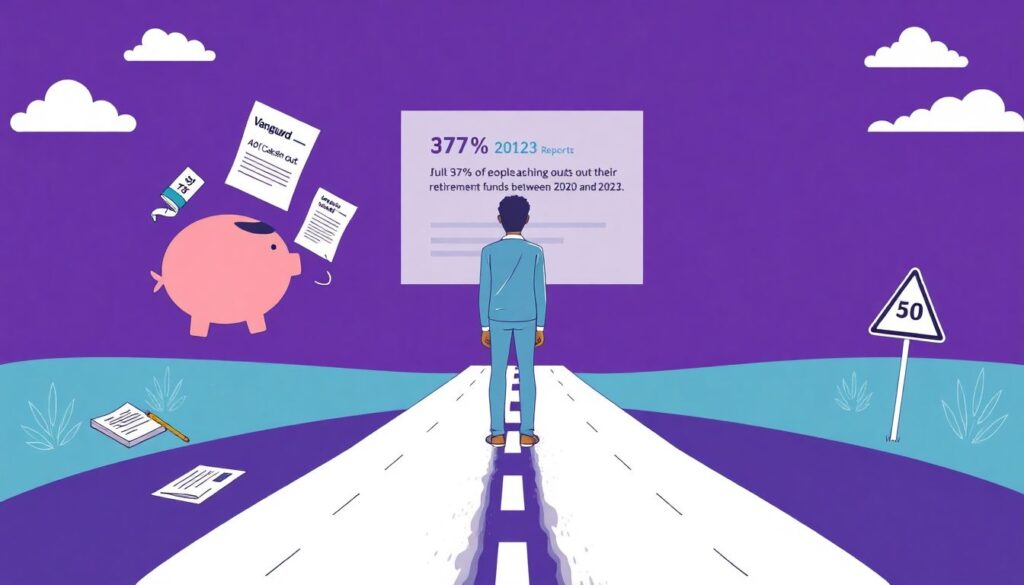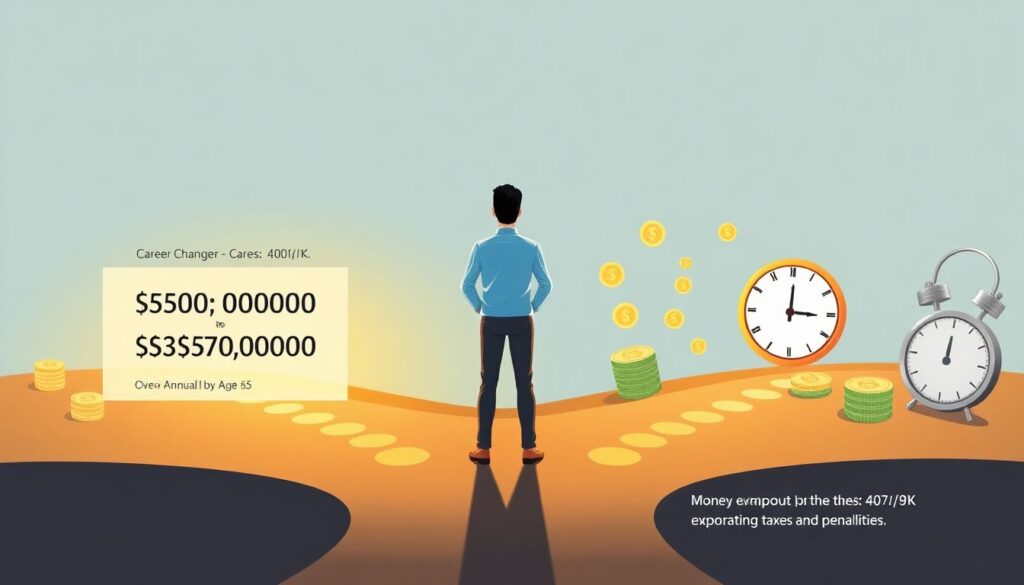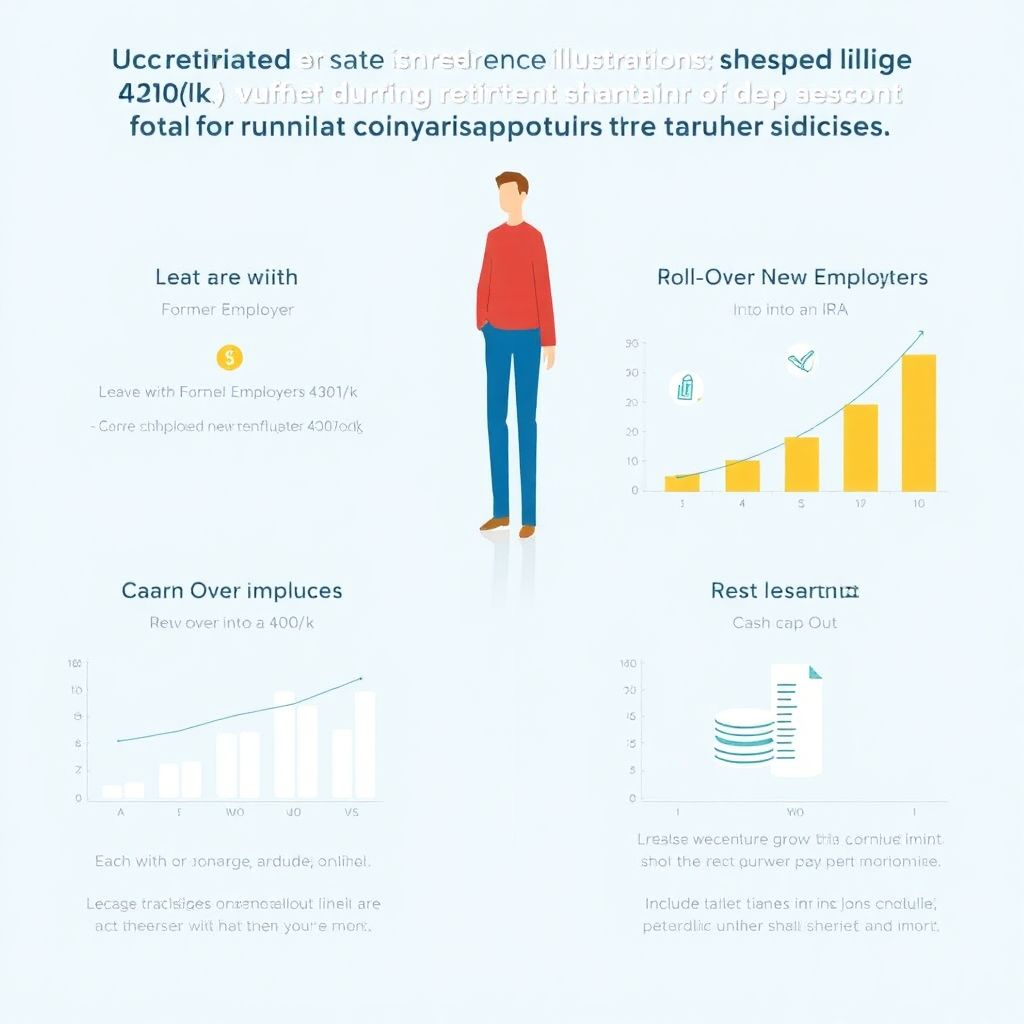Understanding the 401(k) During Career Transitions
Definition and Core Function of a 401(k)
A 401(k) is a tax-advantaged retirement savings plan offered by many U.S. employers. It allows employees to contribute a portion of their salary on a pre-tax basis, with potential employer matching. The funds grow tax-deferred until withdrawal, typically after age 59½. There are two main types: the traditional 401(k), where contributions reduce taxable income today, and the Roth 401(k), where contributions are taxed upfront but withdrawals are tax-free. During a job change, understanding how to manage this account is crucial to avoid penalties, taxes, or missed growth opportunities.
Why Career Transitions Pose a Risk to Retirement Savings

Career transitions—whether voluntary or due to layoffs—can disrupt retirement planning. According to Vanguard’s 2023 report, 37% of individuals changing jobs between 2020 and 2023 cashed out part or all of their 401(k), incurring taxes and penalties. These early withdrawals can significantly reduce long-term growth due to lost compounding. For example, a $10,000 withdrawal at age 35 could mean a $76,000 loss by retirement, assuming a 7% annual return. Therefore, it’s critical to understand how to preserve and optimize your 401(k) during transitions.
Strategic Options for Managing Your 401(k)
1. Leave the 401(k) with Your Former Employer
If your account balance exceeds $5,000, most plans allow you to leave your 401(k) intact. This option requires no immediate action and maintains tax-deferred growth. However, you may lose access to plan-specific benefits or low-cost investment options. Moreover, managing multiple accounts across employers can complicate your financial picture. A common pitfall is neglecting rebalancing or forgetting about the account altogether, which can lead to suboptimal asset allocation.
2. Roll Over to a New Employer’s 401(k)
Rolling your old 401(k) into your new employer’s plan consolidates savings and simplifies management. This strategy preserves tax advantages and may offer better investment choices or lower fees. According to Fidelity’s 2024 Retirement Trends report, 48% of job switchers opted for this route in the past three years. However, this option depends on the new plan’s rules and investment lineup. If the new plan is restrictive or has high fees, it may not be the optimal choice.
3. Roll Over into an IRA (Individual Retirement Account)

An IRA rollover provides greater control and a wider selection of investments than most 401(k) plans. This is especially beneficial for experienced investors or those working with financial advisors. However, IRAs often lack the creditor protections and loan options available in 401(k) plans. Additionally, Roth 401(k) funds rolled into a Roth IRA must satisfy a five-year holding period to avoid taxes on earnings. This method is increasingly popular: as of 2023, over 60% of rollovers from 401(k)s went into IRAs, per the Investment Company Institute.
4. Cashing Out: A Costly Mistake
While tempting during unemployment, cashing out a 401(k) should be a last resort. Withdrawals before age 59½ typically incur a 10% early withdrawal penalty plus income tax. For instance, withdrawing $20,000 could result in a $7,000 tax bill. Moreover, the long-term loss from missing market growth is substantial. According to the Employee Benefit Research Institute (EBRI), early withdrawals reduced retirement savings by an average of 25% among workers aged 30–45 between 2020 and 2023.
Key Steps to Maximize Your 401(k) During Transitions
Critical Actions to Take
To safeguard and enhance your 401(k) during a career shift, consider the following steps:
1. Review Plan Details: Before leaving your job, understand your vesting schedule and employer match rules. Unvested funds may be forfeited.
2. Evaluate Rollover Options: Compare fees, investment choices, and flexibility between your old 401(k), new employer plan, and an IRA.
3. Avoid Gaps in Contributions: Resume contributions as soon as eligible in your new plan. Even short pauses can reduce long-term growth.
4. Consolidate Accounts: If practical, consolidate old 401(k)s to reduce complexity and improve oversight.
5. Consult a Professional: A financial advisor can help tailor rollover and investment strategies to your goals and tax situation.
Visualizing the Impact of Strategic Decisions

Imagine a career changer at age 35 with $50,000 in a 401(k). If they leave it untouched and earn a 7% annual return, the balance could grow to over $380,000 by age 65. However, if they cash out and spend it, they not only lose the immediate funds to taxes and penalties but also forfeit decades of compounding. This underscores the importance of long-term thinking. A conceptual diagram would show three diverging lines: one for leaving the 401(k), one for rolling over, and one for cashing out—clearly illustrating the compounding gap over time.
Comparing the 401(k) to Other Retirement Vehicles
401(k) vs. IRA vs. Brokerage Account
While the 401(k) offers high contribution limits ($23,000 in 2025, with a $7,500 catch-up for those over 50), it often has limited investment options and plan-specific fees. IRAs have lower contribution limits ($7,000 in 2025), but offer more flexibility. Taxable brokerage accounts provide full liquidity and investment freedom but lack tax deferral. During a job change, IRAs often strike a balance between flexibility and tax efficiency, while 401(k)s remain powerful for employer matching and higher contributions.
Conclusion: Long-Term Perspective Amid Change
Career transitions are inevitable in a dynamic job market—data from the Bureau of Labor Statistics shows that the average U.S. worker changes jobs 12 times in a lifetime. Each transition presents both risk and opportunity for retirement planning. By understanding your rollover options, avoiding premature withdrawals, and strategically managing your 401(k), you can preserve and grow your retirement savings. The key lies in proactive planning, informed decision-making, and a disciplined long-term outlook.

